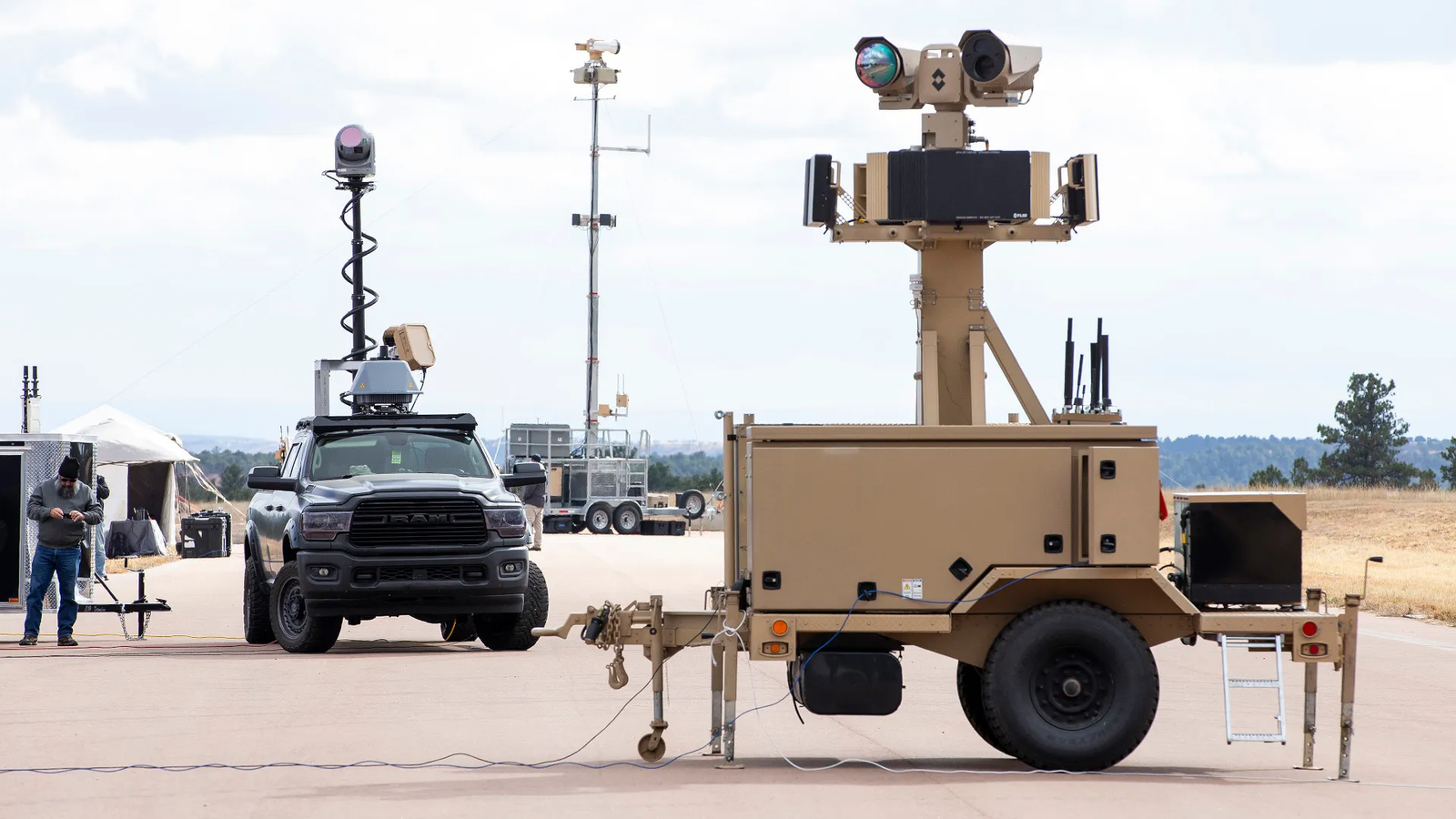
Have you seen how drones have evolved from hobbyist playthings to news-generating dangers? Skies over military installations, airports, and even downtown areas are now filled with unwanted visitors—some benign, some less so. As drones become smarter, more agile, and more stealthy, the competition to halt them intensifies. Below is a preview of the 10 most effective counter-drone technologies and trends in military defense today, starting at 10 and ending at 1.

10. Titan: Radio Frequency Defense Using AI
The BlueHalo Titan is a transportable, AI-based counter-drone technology that employs radio frequency (RF) to detect and neutralize threats. The system can be deployed rapidly, providing operators with real-time situational awareness and protection within five minutes. The Department of Defense has invested $24 million in Titan, and it is a favorite for mobile security and pre-deployment operations. Titan’s machine learning and artificial intelligence foundation enables it to stay ahead of the constantly changing strategies of malicious drone pilots, offering a robust shield on today’s battlefield.

9. Leonidas: High-Powered Microwave Barricade
Epirus, Inc. pushed the boundaries of counter-drone technology with Leonidas, a high-powered microwave (HPM) solution. This is no ordinary zapper—Leonidas can target specific drones or build a microwave barrier to take out entire flocks. It employs Gallium Nitride semiconductors, the latest technology, to deliver maximum punch in a small package. As per Epirus, Leonidas has been successful in recent Department of Defense testing, and friendly drones can be operated while enemy drones are taken down thanks to its safety features.

8. Ku-band Radio Frequency Sensors (KuRFS) and Coyote Effectors
Raytheon Technologies’ KuRFS system integrates precision targeting radar with mobile sensing to detect, identify, and track airborne threats from 60 kilometers. Combined with Coyote missiles, it is the foundation of the Army’s integrated defeat system (LIDS), providing 360-degree coverage and capability to knock down single drones as well as swarms—even at greater heights and ranges than most rivals.

7. Multi-Environmental Domain Unmanned Systems Application (MEDUSA)
Tiny drones are notoriously difficult to detect and intercept, particularly if they’re widely available off the shelf. The U.S. Air Force’s MEDUSA program, created by SRC Inc., meshes a system of sensors and countermeasures to rapidly deploy anti-drone protection wherever the threat is most acute. It’s an all-flex system—mashing together radar, RF, and electronic warfare to respond to evolving drone methods on the fly.

6. Silent Archer: The Sneaky Drone Hunter
SRC’s Silent Archer system is meant to defeat the emerging threat of small, slow, and low-flying drones—just the type that evade traditional radar. With both Army and Air Force contracts, Silent Archer employs radar and electronic sensors to detect, track, and destroy enemy drones, and it is an essential tool for defending U.S. forces globally.

5. Mjölnir: The Microwave Defense Hammer
Sponsored by Thor’s mythical hammer, Mjölnir is the Air Force Research Lab’s response to swarms of drones. An upgrade of the previous THOR system, Mjölnir employs bursts of microwave energy to take out multiple drones simultaneously. It’s small enough to ship in a cargo container, ready to deploy in three hours, and powered by a standard wall outlet. In tests, Mjölnir proved 90 percent effective, with ongoing improvements being made.

4. Lattice System and Sentry Tower: AI-Driven Autonomy
Anduril Industries’ Lattice system, just contracted by the U.S. Marine Corps for $642 million, is all about autonomous protection 24/7. With the use of artificial intelligence, Lattice can identify, track, recognize, and nullify airborne threats without human input. The Sentry Tower, loaded with radar and optical sensors, runs on machine learning to process data to detect and react to drone intrusions in real time. This system allows 24/7 autonomous operations fueled by sophisticated software, says Anduril.

3. DroneGun Tactical: The Handheld Jammer
The best defense is a good offense you can take along sometimes. DroneShield’s DroneGun Tactical is a long-range, hand-held jammer that interferes with drone communications and GPS signals, causing them to land or fly back to base. It’s easily aimed and fired like a rifle, and it’s already in use by the Five Eyes intelligence community. The device is particularly useful in cities where taking out drones would risk collateral damage.

2. VAMPIRE: Vehicle-Mounted Precision Rockets
The L3Harris Technologies-developed Vehicle Agnostic Modular Palletized ISR Rocket Equipment (VAMPIRE) system brings precision firepower to drone battles. Mounted on nearly any vehicle, VAMPIRE fires 70 mm laser-guided rockets to take down enemy drones. It’s portable, flexible, and has already been fielded to Ukrainian troops to defend against Russian drone attacks. The U.S. Department of Defense has heavily invested in this system because it sees its value in both domestic and foreign operations.

1. The Policy and Authority Gap: The Largest Vulnerability
All the technology in the world won’t do any good if nobody has the authority to use it. Regardless of the speed at which counter-drone tech is evolving, the U.S. still has a patchwork of laws and fuzzy lines of responsibility. As explained by Rear Admiral Spedero Jr. of the Joint Chiefs of Staff, “the technology to field systems has far outpaced the technology to defeat those systems”. Various federal agencies are responsible, but no one agency has definite authority, leaving military installations vulnerable to eavesdropping and attack. Despite the use of sophisticated detection and mitigation capabilities, U.S. drone defense’s Achilles’ heel continues to be gaps in policy and leadership.
The war in the skies is only starting, and as drones continue to advance, so too must the weapons and regulations meant to halt them. The fate of defense may even rest on the speed at which these loopholes are plugged—and how effectively new technologies are used.
